Pharmaco-proteogenomic characterization of liver cancer organoids for precision oncology
- PMID: 37494474
- PMCID: PMC10949980
- DOI: 10.1126/scitranslmed.adg3358
Pharmaco-proteogenomic characterization of liver cancer organoids for precision oncology
Abstract
Organoid models have the potential to recapitulate the biological and pharmacotypic features of parental tumors. Nevertheless, integrative pharmaco-proteogenomics analysis for drug response features and biomarker investigation for precision therapy of patients with liver cancer are still lacking. We established a patient-derived liver cancer organoid biobank (LICOB) that comprehensively represents the histological and molecular characteristics of various liver cancer types as determined by multiomics profiling, including genomic, epigenomic, transcriptomic, and proteomic analysis. Proteogenomic profiling of LICOB identified proliferative and metabolic organoid subtypes linked to patient prognosis. High-throughput drug screening revealed distinct response patterns of each subtype that were associated with specific multiomics signatures. Through integrative analyses of LICOB pharmaco-proteogenomics data, we identified the molecular features associated with drug responses and predicted potential drug combinations for personalized patient treatment. The synergistic inhibition effect of mTOR inhibitor temsirolimus and the multitargeted tyrosine kinase inhibitor lenvatinib was validated in organoids and patient-derived xenografts models. We also provide a user-friendly web portal to help serve the biomedical research community. Our study is a rich resource for investigation of liver cancer biology and pharmacological dependencies and may help enable functional precision medicine.
Conflict of interest statement
Figures

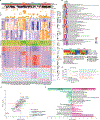
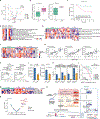
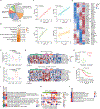
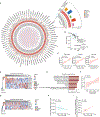
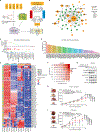
Comment in
-
LICOB: a powerful organoid platform for drug discovery.Cell Res. 2024 Jan;34(1):11-12. doi: 10.1038/s41422-023-00878-0. Cell Res. 2024. PMID: 37730938 Free PMC article. No abstract available.
References
-
- Sung H, Ferlay J, Siegel RL, Laversanne M, Soerjomataram I, Jemal A, Bray F, Global Cancer Statistics 2020: GLOBOCAN Estimates of Incidence and Mortality Worldwide for 36 Cancers in 185 Countries. CA Cancer J Clin 71, 209–249 (2021). - PubMed
-
- Banales JM, Marin JJG, Lamarca A, Rodrigues PM, Khan SA, Roberts LR, Cardinale V, Carpino G, Andersen JB, Braconi C, Calvisi DF, Perugorria MJ, Fabris L, Boulter L, Macias RIR, Gaudio E, Alvaro D, Gradilone SA, Strazzabosco M, Marzioni M, Coulouarn C, Fouassier L, Raggi C, Invernizzi P, Mertens JC, Moncsek A, Rizvi S, Heimbach J, Koerkamp BG, Bruix J, Forner A, Bridgewater J, Valle JW, Gores GJ, Cholangiocarcinoma 2020: the next horizon in mechanisms and management. Nat Rev Gastroenterol Hepatol 17, 557–588 (2020). - PMC - PubMed
-
- Llovet JM, Kelley RK, Villanueva A, Singal AG, Pikarsky E, Roayaie S, Lencioni R, Koike K, Zucman-Rossi J, Finn RS, Hepatocellular carcinoma. Nat Rev Dis Primers 7, 6 (2021). - PubMed
-
- Drost J, Clevers H, Organoids in cancer research. Nat Rev Cancer 18, 407–418 (2018). - PubMed
Publication types
MeSH terms
Grants and funding
LinkOut - more resources
Full Text Sources
Medical
Miscellaneous

